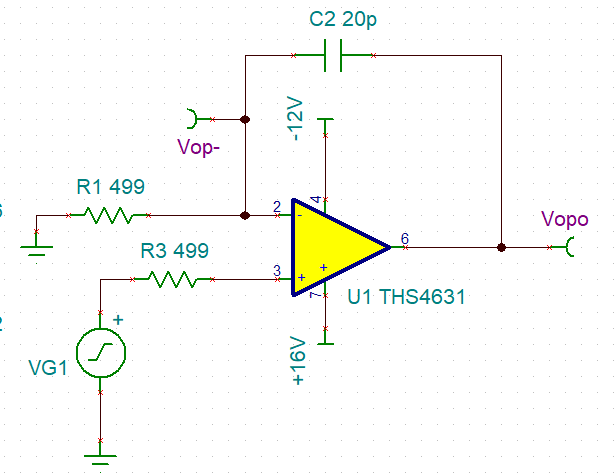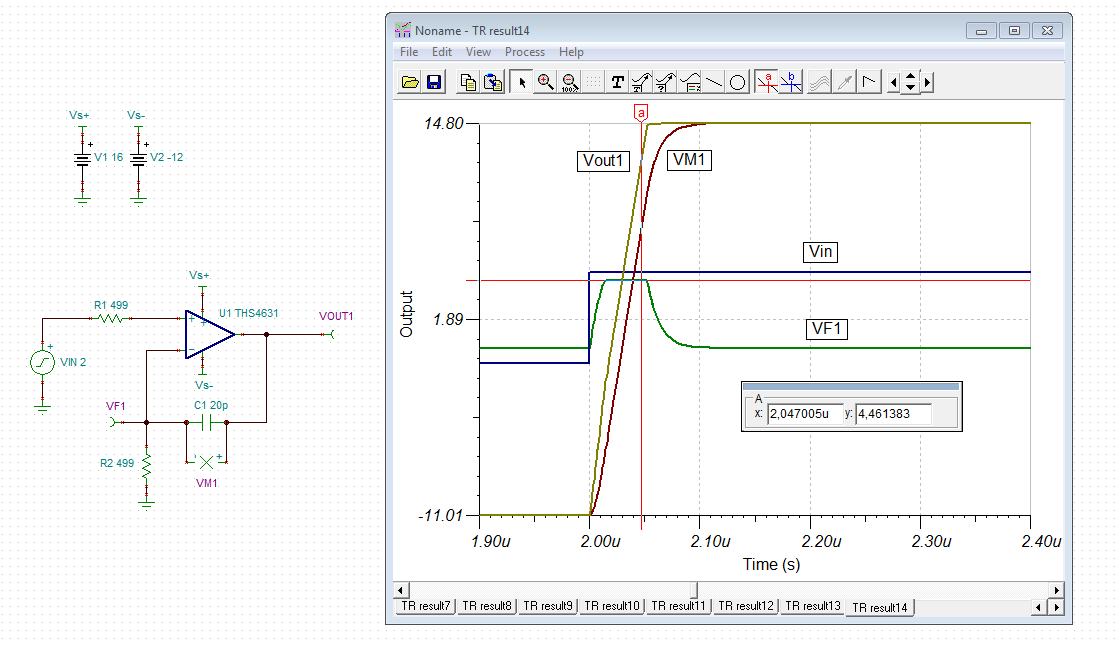Other Parts Discussed in Thread: OPA860, OPA615, LM7171
Dear TI expert,
I design a PCB in which a THS4631-based integrator is used. The circuit is as Fig1. The power supply for 4631 is +16V and -12V, feedback capacitor C2 is 20pF, R1 is 499 ohms.
My goal is clear, and that is to control the output voltage’s slope by changing VG1 (“+” terminal voltage). The slope can be expressed by dVout/dt=VG1/(R1*C2).
I do a test, in which VG1 is stepped from -1V to +5V. And the waveform is as Fig2, where blue waveform is VG1, red one is voltage at op amp’s “-” terminal and green one is the output voltage Vout. As you can see, after VG1 reaches +5V, it takes “-” terminal and output voltage 30ns to slowly reaches their target: “-” terminal voltage stables at one value and Vout rises at constant gradient. I have 2 questions.
- Why the response is so slow? 30ns is a bit long for THS4631, whose gain-bandwidth product is 210MHz. And why the “-” terminal voltage is about 80% of VG1?The big difference can lead to errors in the slope control.
- Is there any way to narrow the response time(30 ns here) and to eliminate or predict the voltage difference between THS4631 two input nodes?
Fig1
Fig2
Best Regards
Yatao






